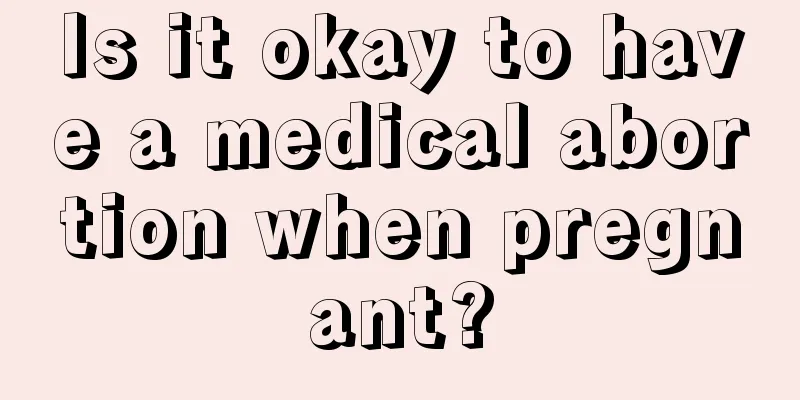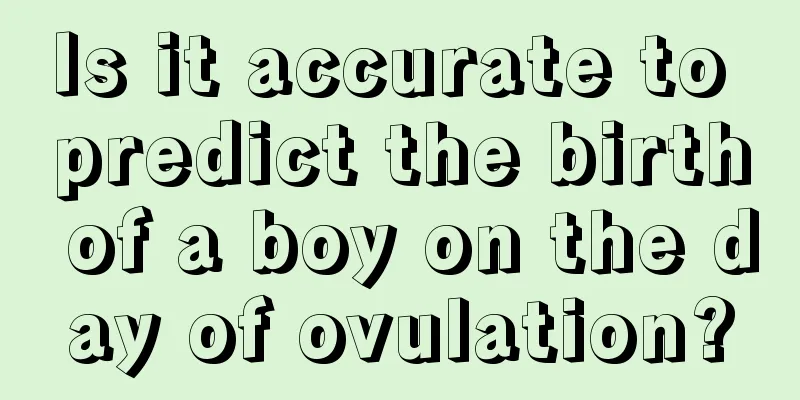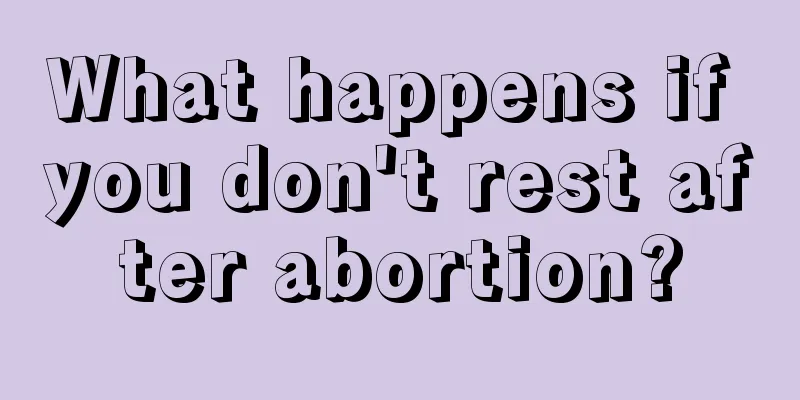What causes lower abdominal pain after menstruation?

|
If female friends still have lower abdominal pain after their menstruation is over, they should pay more attention to rest, because this situation may be caused by acute abdominal pain, or other gynecological diseases. No matter what the situation is, you can only know it after an examination. You cannot use painkillers at will, as these drugs are of no benefit to the patient's body. Acute abdominal pain Lower abdominal pain can be caused by minor reasons: acute inflammation of pelvic organs, such as adnexitis and regional enteritis; perforation or rupture of pelvic and abdominal organs, such as ectopic pregnancy, ovarian cyst rupture, gastric and duodenal ulcers, gastric cancer, appendicitis, gallbladder perforation and rupture of appendix abscess, among which rupture of ectopic pregnancy and perforation of appendix abscess are the most common. In addition, acute intestinal obstruction, stones in abdominal organs, acute blood flow disorders in pelvic organs, such as ovarian tumor torsion, hydrosalpinx torsion, intestinal torsion, as well as parasites, dysmenorrhea, and pelvic and abdominal trauma can all cause acute lower abdominal pain. Some abdominal pain occurs at or near the lesion site, while others are not at the lesion site. As the disease progresses, the location of the abdominal pain changes. Abdominal pain can be divided into two types: (1) pain in the affected organ itself. (2) Referred pain radiating to the body wall. The former can also be converted into the latter. Gynecological acute abdomen often manifests as organ pain, such as ovarian tumor pedicle torsion and hydrosalpinx torsion. However, there are also cases where the patient first feels abdominal pain in the affected area and then the condition changes later on, so special attention should be paid to referred pain. Chronic abdominal pain The abdominal pain is mainly dull pain in the lower abdomen and sacral pain. It is mostly caused by chronic cervicitis, chronic adnexitis, chronic pelvic connective tissue inflammation, pelvic congestion, retroverted uterus, uterine hypertrophy, uterine prolapse, etc. Dull pain in the lower abdomen, a feeling of falling, and back pain are often aggravated after fatigue, standing for a long time, after sexual intercourse, and during menstruation. A considerable portion of chronic low back pain is not related to gynecological diseases, such as sacroiliac joint strain, lumbar muscle strain, intervertebral disc herniation and other diseases. Attention should be paid to the onset time, intensity, duration or intermittence of the pain, whether the pain changes or expands after the onset, whether the pain refuses to be pressed or likes to be pressed, whether there are associated symptoms such as chills, fever, nausea, vomiting, constipation, excessive flatulence, amenorrhea or menstrual disorders, and whether there is a lumps. |
<<: What are the symptoms of Yin deficiency during pregnancy
Recommend
Is it normal to have yellow urine during early pregnancy?
Generally speaking, human urine should be colorle...
Diabetic Guide | Overcoming all difficulties to form a group and debut, oral hypoglycemic drugs show their super strength!
Author: Zhang Xuan, Chief Pharmacist, Zhongshan H...
Can pregnant women squat to go to the toilet?
Toilets have been installed in more and more fami...
What can I eat to relieve severe vomiting during pregnancy?
The reaction of morning sickness during pregnancy...
I got pregnant 8 days after the angiography.
Contrast examination is a common way to check the...
Seize the golden growth period in spring and pay attention to these 3 misunderstandings that affect children's height growth!
Source: People's Daily, Guangdong Centers for...
Slimming your legs is not that difficult. You can have pencil legs in one month.
Every woman wants to have long and straight legs,...
Complete list of diet recipes for postpartum weight loss
Summer is coming again, and many male and female ...
Pictures of women on the operating table
For pregnant women, contraceptive measures are ve...
What happens when women suffer from breast hyperplasia?
Gynecological diseases such as breast hyperplasia...
Can pregnant women eat stinky tofu?
Stinky tofu smells stinky, but it tastes quite de...
Are cervical fibroids dangerous?
Cervical uterine fibroids and uterine fibroids ar...
Will there be more vaginal discharge in the first few days of pregnancy?
When a woman is pregnant, her body undergoes many...
Do I need to do Down syndrome screening if nt is normal?
Generally speaking, after a woman becomes pregnan...
There's something like egg white underneath
The female private parts are very susceptible to ...









